Introduction
In the field of electric vehicle charging, the OCPP (Open Charge Point Protocol) is a critical standard that requires detailed understanding. Whether you are a charger manufacturer, software developer, or operator, it’s essential to grasp the key role of this protocol and its impact on EV charging systems. This article will provide an in-depth explanation of OCPP and its related technologies, helping you understand how the OCPP protocol drives the development of the electric vehicle charging industry.
What is OCPP?
OCPP, or Open Charge Point Protocol, is a standardized communication protocol for the exchange of data between Electric Vehicle Supply Equipment (EVSE) and the central management system (CSMS) in EV charging. OCPP ensures interoperability between chargers and management software from different manufacturers and supports intelligent management during the charging process.
The core design philosophy of the OCPP protocol is open accessibility and interoperability. By providing a unified standard for EV charging systems, OCPP makes communication between charging stations and management systems more standardized and predictable. This uniformity is crucial for building global EV charging networks, especially in operations involving cross-region and cross-manufacturer chargers.
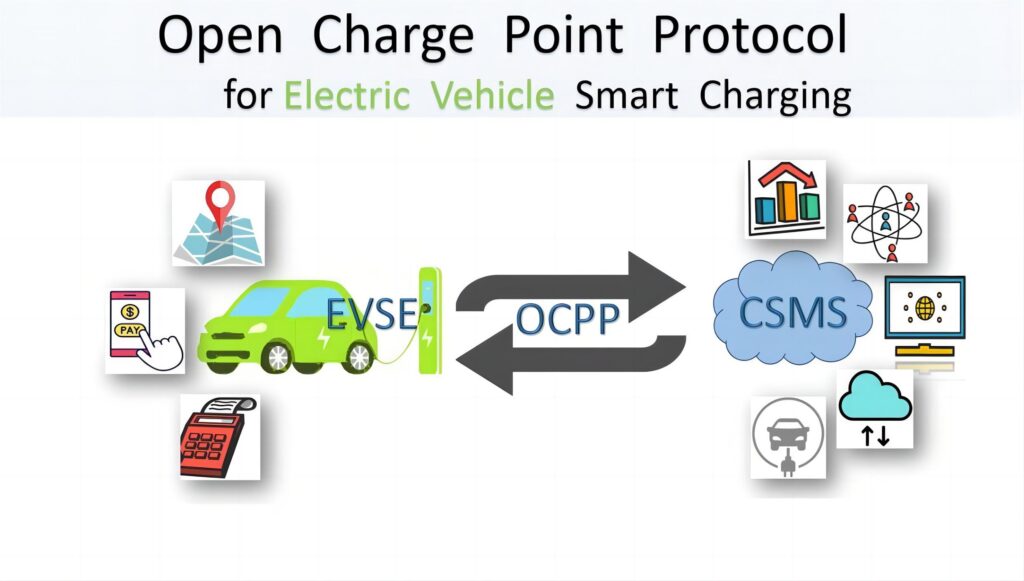
The Role and Significance of OCPP
The primary purpose of the OCPP protocol is to provide an open and compatible communication interface to solve compatibility issues between different manufacturers’ equipment and systems. It offers standardized solutions for building and operating EV charging networks, promoting the rapid development of global EV charging infrastructure.
As the number of electric vehicles rapidly increases, the demand for charging grows, making the intelligent and interconnected management of charging stations even more important. OCPP enables charging stations to communicate more efficiently with the grid and management platforms, achieving functions such as smart scheduling, remote monitoring, and data collection, thereby enhancing the user charging experience.
- Promoting Global Interoperability: OCPP’s open nature enables seamless integration of chargers from different manufacturers, providing technical support for cross-platform charging operations worldwide. Users, no matter where they are, can enjoy convenient charging services under a unified standard.
- Reducing Operational Costs: Through standardized communication protocols, operators can more easily manage devices, diagnose faults, and perform load management, thus lowering operational costs and maintenance complexity.
- Enhancing Charging Experience: OCPP supports smart charging and load management features, allowing users more flexibility and convenience during the charging process.
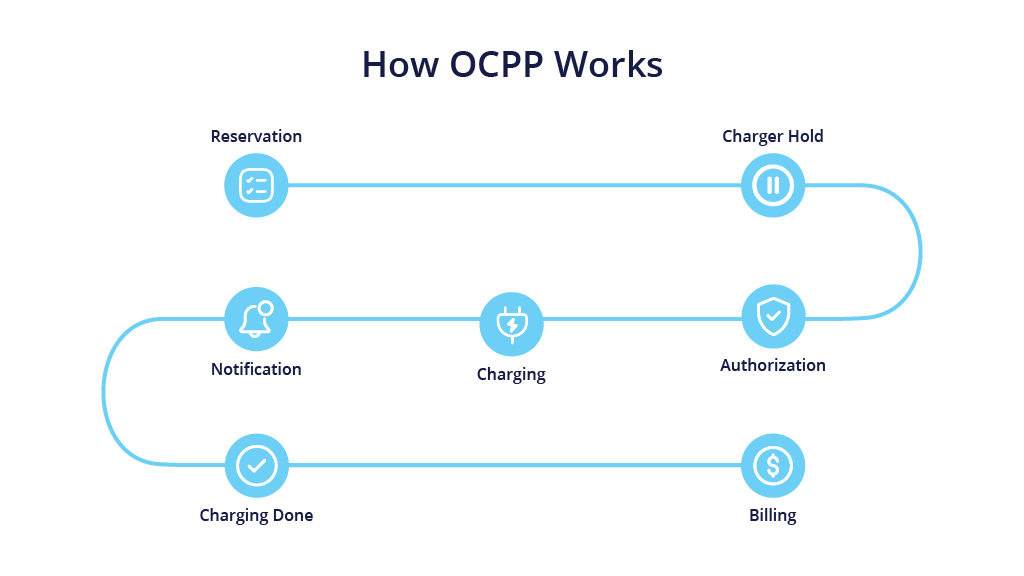
How OCPP Works
OCPP’s working principle is simple and involves the following steps:
- Charging Station and Central System Communication: OCPP defines the data exchange methods between charging stations and central management systems (CSMS). Charging stations send data such as charging status and payment information to the backend system via protocols like WebSocket or HTTP, allowing the system to monitor and manage the stations.
- Charging Process Control: OCPP not only controls the start/stop of charging but also adjusts the real-time charging power to implement smart charging. Through the OCPP protocol, the charging station can receive scheduling commands from the central system, ensuring the charging process proceeds as planned. For instance, during peak electricity demand periods, the system will reduce charging power to avoid overwhelming the grid.
- Device Maintenance and Monitoring: OCPP supports remote diagnostics and maintenance, allowing the central system to monitor the operational status of the chargers and detect faults promptly. If a problem occurs, the system automatically triggers an alarm, enabling operators to resolve the issue quickly. This way, maintenance and repairs can be carried out without interrupting service.
- Charging Information Recording: OCPP also supports the recording of charging data such as charging duration, energy consumption, and payment information. Operators can use this data to analyze station operations, optimize strategies, and reduce costs.
Versions and Evolution of OCPP
Since its release, OCPP has gone through multiple versions, with each new version enhancing functionality and performance. The main versions of OCPP include:
- OCPP 1.2: The initial version, supporting basic communication between charging stations and management systems. It includes fundamental functions such as charging start/stop, status reporting, etc.
- OCPP 1.5: Introduced more charging control functions, such as remote start/stop, and enhanced dynamic management capabilities for charging stations.
- OCPP 2.0: Added support for smart charging, improved data security and privacy, and introduced new authentication mechanisms. It also refined data interaction between charging stations and management systems, improving protocol scalability.
- OCPP 2.0.1: Further strengthened coordination with the grid, enabling more accurate load management. It also increased the protocol’s flexibility, supporting more complex charging environments.
- 5OCPP 2.1: The current version, further enhancing support for various charging modes, smart charging, and electric vehicle sharing.
Each version release marks OCPP’s ongoing progress in meeting the evolving needs of modern electric vehicle charging, particularly as versions 2.0 and later prepare for future charging requirements and interactions with smart grids.
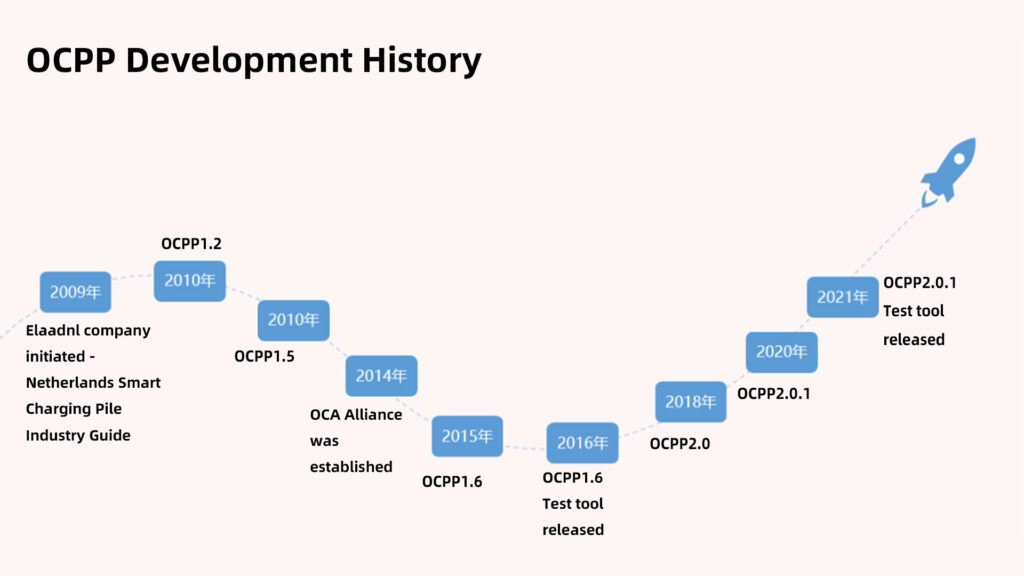
OCPP and Smart Charging
OCPP is not just a communication protocol for charging stations and management systems; it is the foundation of smart charging. Smart charging refers to optimizing charging efficiency and user experience by dynamically adjusting charging power, timing, and interacting with grid systems.
The goal of smart charging is to improve efficiency and reduce pressure on the grid. Through the OCPP protocol, chargers can coordinate with the grid to adjust charging strategies based on grid load and electricity prices. For example, when the grid is under heavy load, OCPP can reduce the charging rate to prevent overloading; during lower demand periods, charging speeds can increase to improve efficiency.
Moreover, OCPP supports control through smart home systems. Users can manage their charging process via smart devices like smartphones, check charging status, and remotely start or stop charging. This allows for more convenient charging process management, energy saving, and lower electricity costs.
Comparison between OCPP and OCPI
In addition to OCPP, another widely used protocol is OCPI (Open Charge Point Interface). The main difference between OCPP and OCPI is that OCPP focuses on communication between charging equipment and management systems, while OCPI focuses on interoperability between charging operators.
OCPI enables charging networks from different operators to interconnect across platforms and regions. With OCPI, users can enjoy unified payment and information sharing while charging at stations from different operators.
For participants in the charging station industry, understanding the differences between OCPP and OCPI, and how they can work together, is key to achieving global interoperability in charging networks. Both complement each other and drive the global development of the EV charging network.
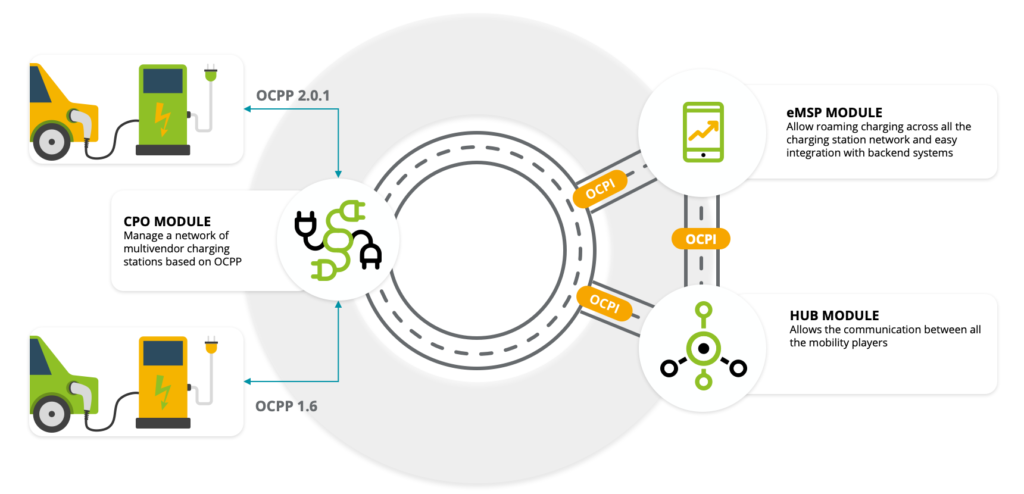
OCPP and Smart Homes: OCPP Home Assistant
With the rapid development of smart home technology, OCPP is now being integrated with smart home systems. For example, OCPP Home Assistant is an application that combines OCPP with home automation systems. With this technology, users can control the charging process of their electric vehicles through home smart devices. For instance, users can schedule charging during low electricity price periods. The combination of smart home systems and OCPP not only makes the charging process smarter but also optimizes household energy management.
OCPP Certification and Compliance
To ensure the quality and safety of charging equipment and software, the OCPP protocol requires that charging station equipment and management systems undergo OCPP certification. The certification process includes functional testing, performance evaluation, and security validation. Devices that receive OCPP certification provide better reliability and safety to users, thereby enhancing their market competitiveness.
OCPP certification helps guarantee the quality of devices and software, increases user trust in the equipment, and promotes the healthy development of the EV charging market. It covers various standards for charging stations, including electrical safety, communication interfaces, and safety certification.
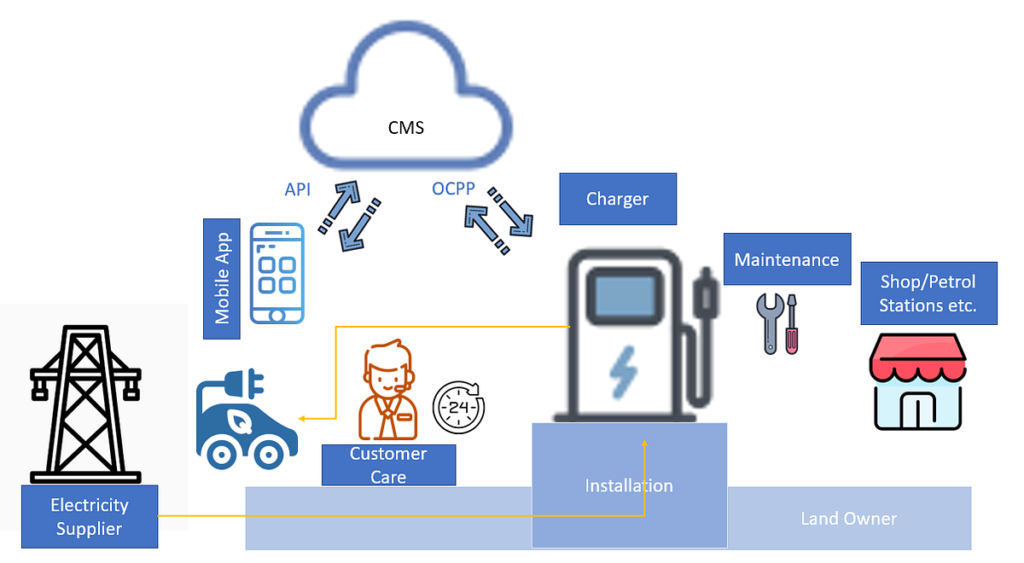
Future Development of OCPP
With the rapid development of the electric vehicle industry, the OCPP protocol is continually evolving. In the future, the OCPP protocol may expand its functionality to support more charging modes and types of devices. Moreover, with the advent of 5G and IoT technologies, OCPP will play a larger role in the intelligent management of charging stations.
Future versions of OCPP could support more third-party applications and plugins, opening up API interfaces so that more developers can customize features based on market demand. This will provide more opportunities for diversification and innovation in charging station devices, pushing the industry forward.
Conclusion
The OCPP protocol serves as the core communication protocol in the EV charging field, providing standardized interfaces for charging stations and management platforms, facilitating the development of global EV charging infrastructure. Whether in smart charging, load management, or cross-platform interoperability, OCPP plays an essential role. As technology continues to advance, the OCPP protocol will remain a key player in the global electric vehicle charging market.
By understanding the basic concepts of OCPP, its working principles, and its application in smart charging, you will gain a better understanding of the protocol’s significance and use it as a reference for choosing EV charging equipment and system development in the future.

